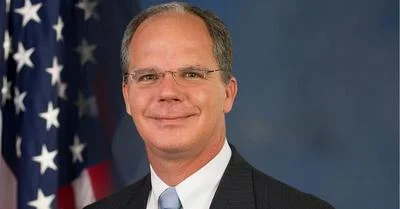Mr. Chairman, thank you for holding this hearing on the annual Trustees Report, which was released just a few hours ago.
Social Security is strong, and it continues to be critically important to the American public.
Social Security is the foundation of retirement security for working families. It has never been a day late or a dollar short.
In fact, the need to expand and improve Social Security is growing, because fewer and fewer workers have traditional pensions to count on, and it is increasingly difficult for the majority of Americans to save adequately for retirement.
In more than 80 years, and despite the worst recession since the Great Depression, Social Security has never failed to pay benefits on time and in full.
Social Security’s demonstrated track record shows that it is the most effective way to make sure that, after a lifetime of work, Americans have enough to live on in retirement.
In the long term, Social Security faces a manageable challenge. It is not now and never will be “broke."
Social Security currently has a $2.8 trillion surplus in its Trust Fund. That exists because of working Americans’ contributions to the fund. It’s just simple math. This $2.8 trillion surplus will be drawn on in future years to help pay for the benefits Americans have earned.
But even when the reserves we’re building up now run out, Social Security will not be “out of money." After 2034, Social Security’s incoming contributions will still be able to cover about three-quarters of the benefits Americans have earned.
Social Security’s long-term shortfall is a problem, one we need to address. But let’s be wary of scare tactics that make it seem like Social Security is “broken," and that our only choice is to cut benefits. Remember:
Last year, we heard claims that Social Security would have to cut benefits for disabled workers by 20 percent.
But Democrats fought to prevent that cut, and showed that Social Security had the funds to pay the benefits Americans had earned.
Or you might have heard about a so-called “unfunded liability" the runs into the trillions of dollars.
But that’s just scare tactics. The U.S. economy is more than 100 times as large as the shortfall in Social Security.
The America I know is strong, and we can afford to do the right thing for seniors, disabled workers and widows and children.
Moreover, Social Security has never added one dime to the debt or the deficit.
Let’s look at what we spend on the military.
This year, defense spending is $576 billion. This has added to our deficit - the amount of this year’s deficit caused by military spending is $114 billion.
Since we last had a balanced budget - in fiscal year 2000 - we have spent a total of $7.9 trillion on defense. Of this, $2.3 trillion was deficit spending.
By contrast, Social Security cannot add to the deficit - as a matter of law.
Worker’s paycheck contributions pay for Social Security’s benefits. Social Security can only spend its own resources. It cannot deficit-spend, it cannot borrow, and it does not add to the debt.
During those same years that defense and war spending was piling $2.3 trillion on to our nation’s debt, Social Security added not one penny to the deficits or our national debt.
In fact, Social Security was actually generating a surplus. Between 2000 and 2016, Social Security’s trust fund grew from $1.0 trillion to $2.8 trillion.
That is, workers’ contributions’ to Social Security generated a surplus of $1.8 trillion during those same years we were running deficits of $2.3 trillion in military spending.
Moving forward into the future, if someone wants to play the crystal-ball game of forecasting what we'll spend on Social Security, the military or anything else,
Then Social Security -- with its independent source of funding from Americans' paycheck contributions -- is in far better shape than any other segment of the federal government.
Social Security has an 80-year record of paying benefits on time and in full.
Its future is likely more certain than that of most American businesses - half of which are no longer around within 5 years of starting up.
I’ll put Social Security’s track record up against anybody’s.
Social Security does face a crisis in the short term - one manufactured by Congress’ failure to adequately fund SSA’s basic operations.
At first glance SSA’s overall budget over the past few years appears to be trending in the right direction; however, a closer look reveals a very different story.
Since 2010, SSA’s dedicated program integrity funding saw a 68 percent increase -- while SSA’s basic operating budget was cut by 10 percent after adjusting for inflation.
This has led to a 9 percent drop in the number of front line staff available to serve the American public.
At the same time, the number of beneficiaries has continued to steadily increase.
Given the magnitude of the cuts and the size of its workloads, SSA cannot cope simply by “prioritizing" its workloads or becoming more efficient.
SSA is already extremely efficient: its administrative costs for Social Security are less than 1 percent of the total cost of Social Security benefits payments.
It is not a surprise that we are seeing backlogs growing and long wait times for services. For example:
More and more Americans who are already receiving benefits are experiencing hardship due to a growing “hidden backlog" of unprocessed work - such as the widow who was unable to buy a headstone for her deceased spouse, due to delays in switching her to her widow’s benefit.
Americans with severe disabilities must wait years to receive the benefits they have earned and so desperately need.
Currently, Americans who need a disability hearing must wait 540 days to get a decision. All of the improvements made in earlier years - when Congress invested the resources, hard-working SSA employees drove waiting times down to just under a year -- have been lost, and the delays are now worse than ever.
Callers to SSA’s 800-number have to wait an average of 15 minutes before their call can be answered.
Since 2010, SSA has had to close 60 full-service field offices as well as 490 smaller offices that served rural areas. As a result, beneficiaries have to travel farther and farther to their reach their nearest Social Security office - which is only open to them four and a half days a week.
Congress’ current trend of prioritizing program integrity activities at the expense of service to applicants, beneficiaries, and taxpayers is unsustainable.
Social Security’s budget is not a zero-sum game.
In my six years as Ranking Member of this Subcommittee, not once have we held a hearing on SSA’s budget.
There is no question that funding for program integrity is absolutely integral to ensuring that only those who are eligible receive payments.
But it is just as equally important to ensure that SSA has the tools and resources needed to provide quick and timely service - to the millions of Americans who currently receive Social Security benefits, and to the millions more who will - in the coming years - be applying and qualifying for the benefits they and their families have earned.
Mr. Chairman, Social Security has been there for Americans for over 80 years. I hope we can work together to make it strong for 80 more years, starting by addressing the preventable crisis of short-sighted budget cuts.









